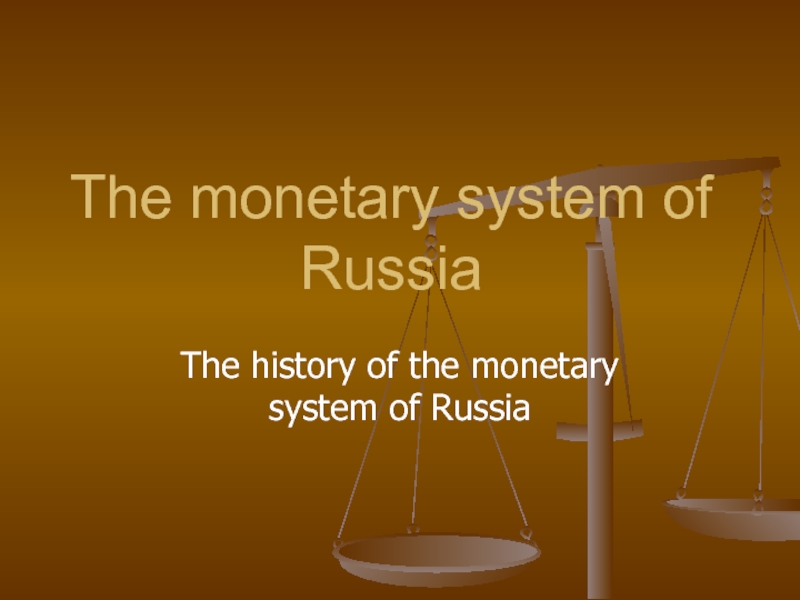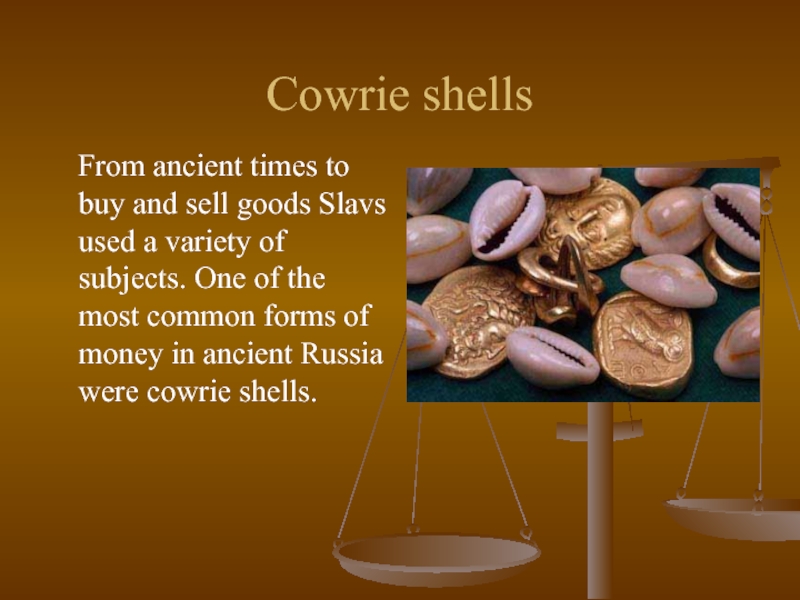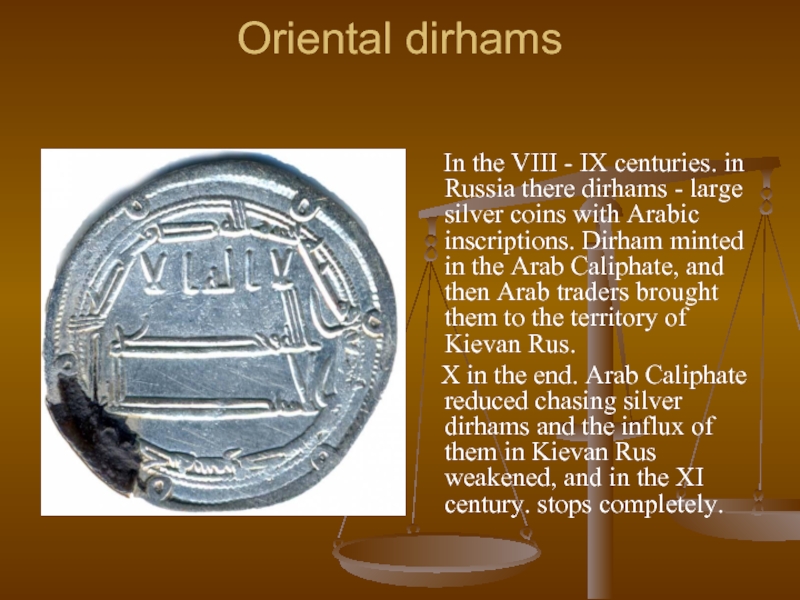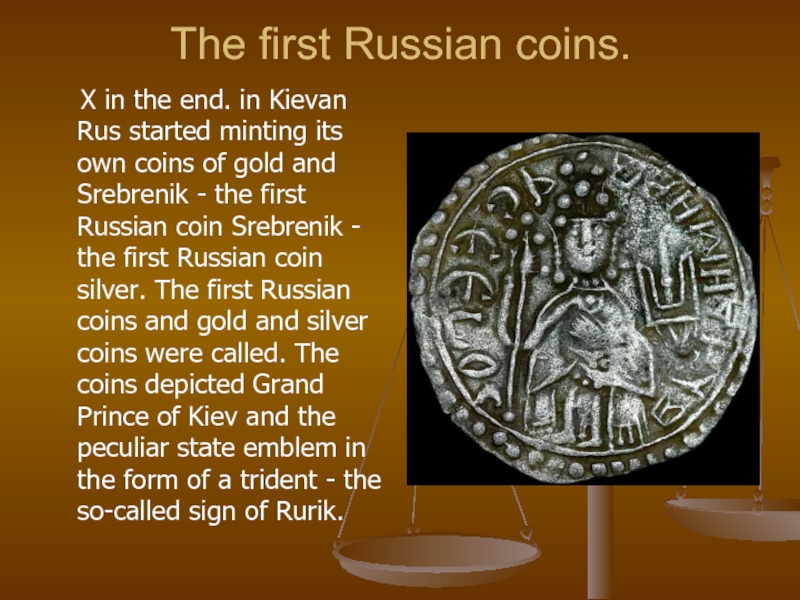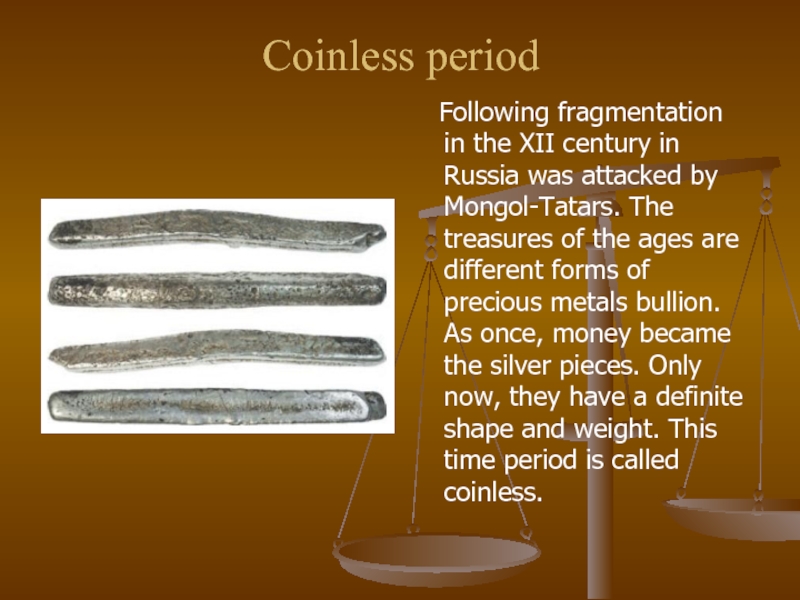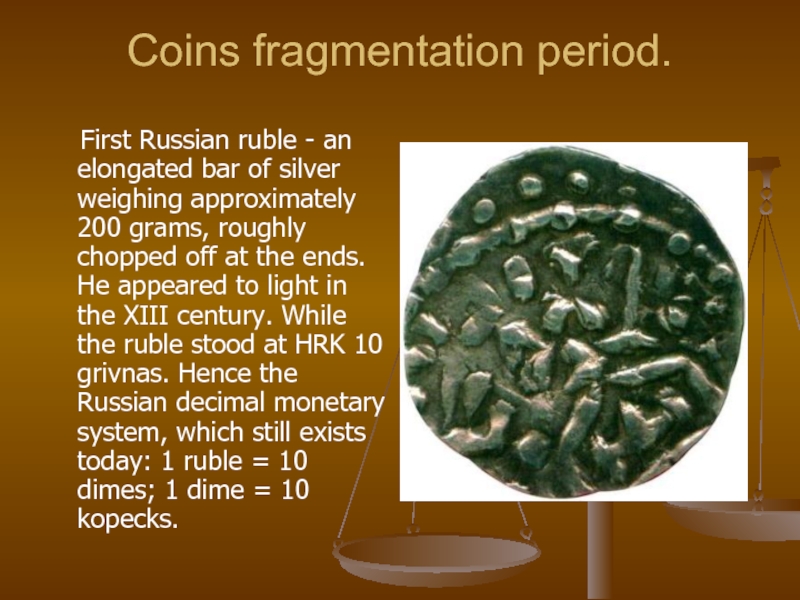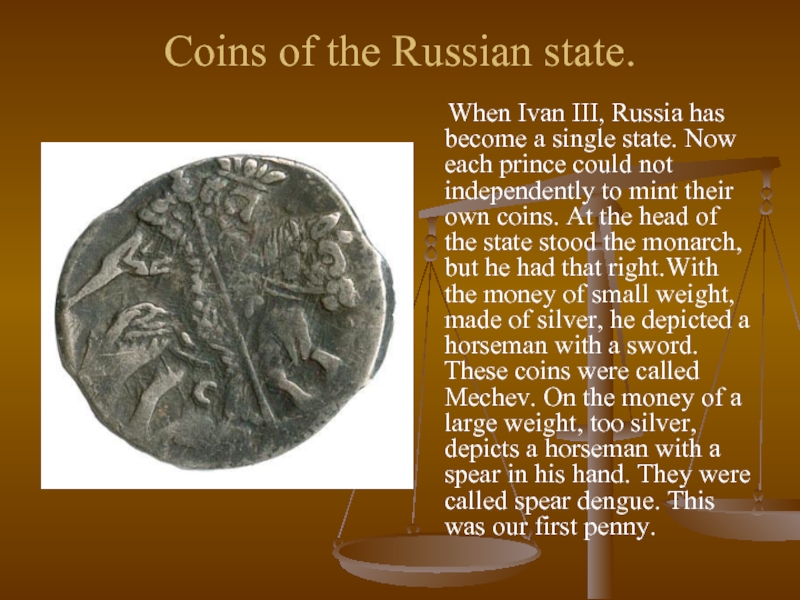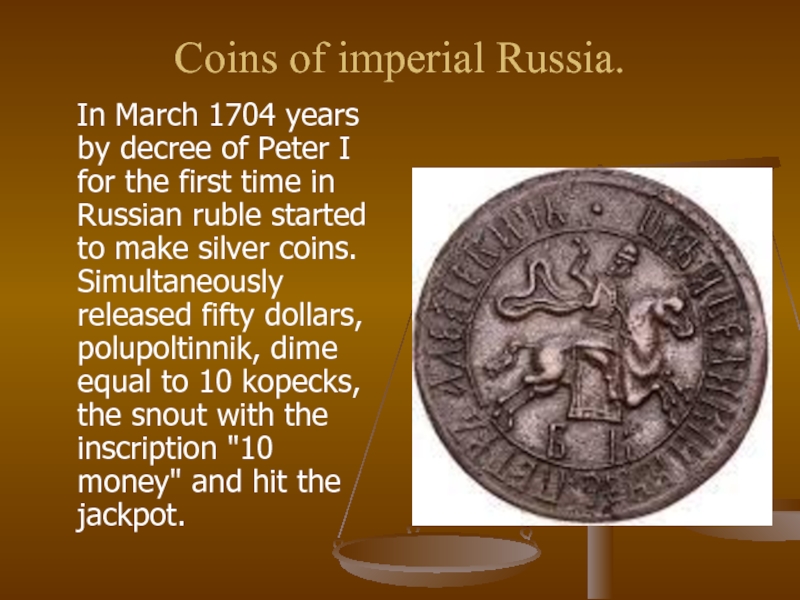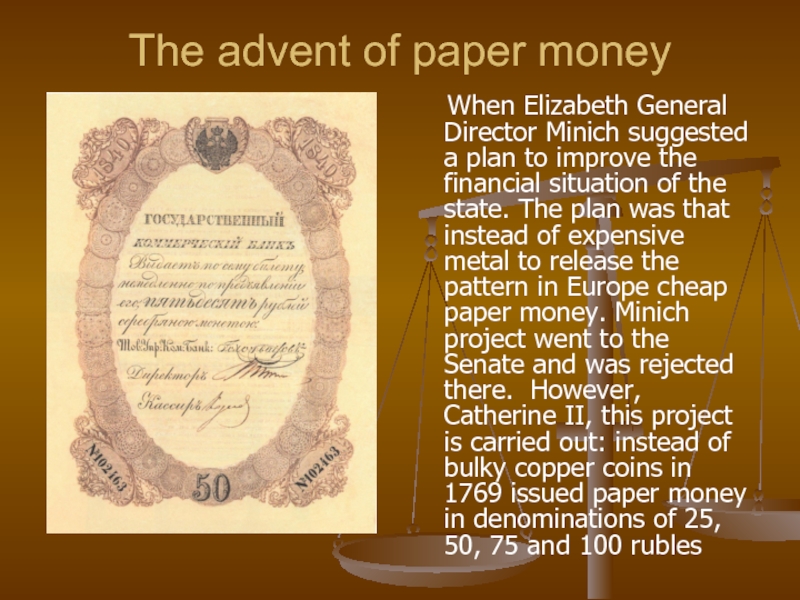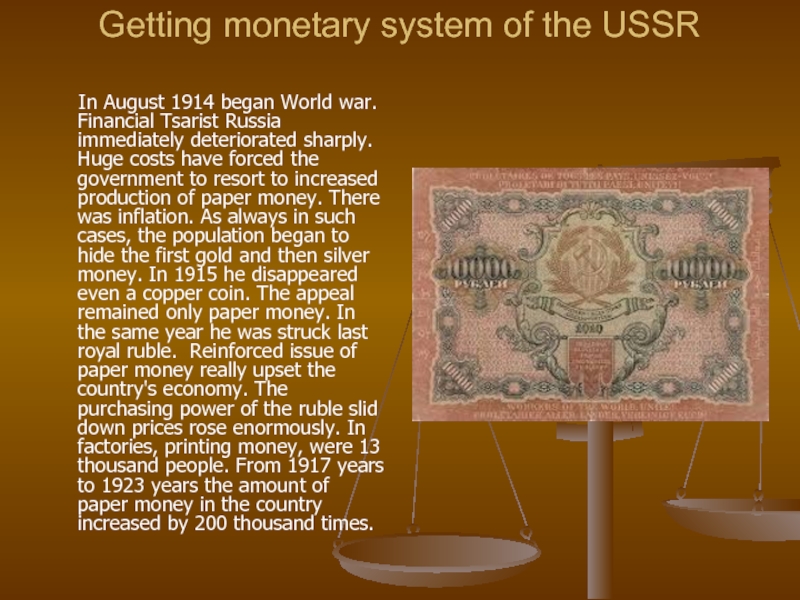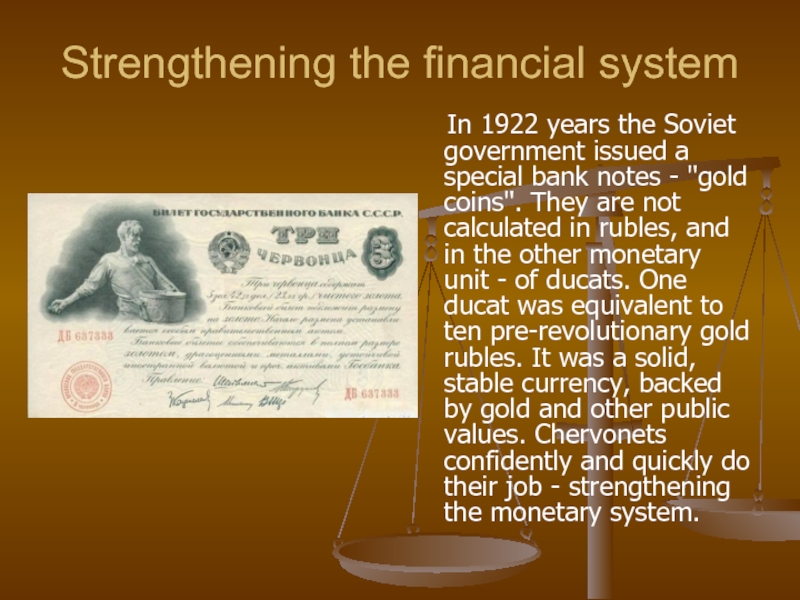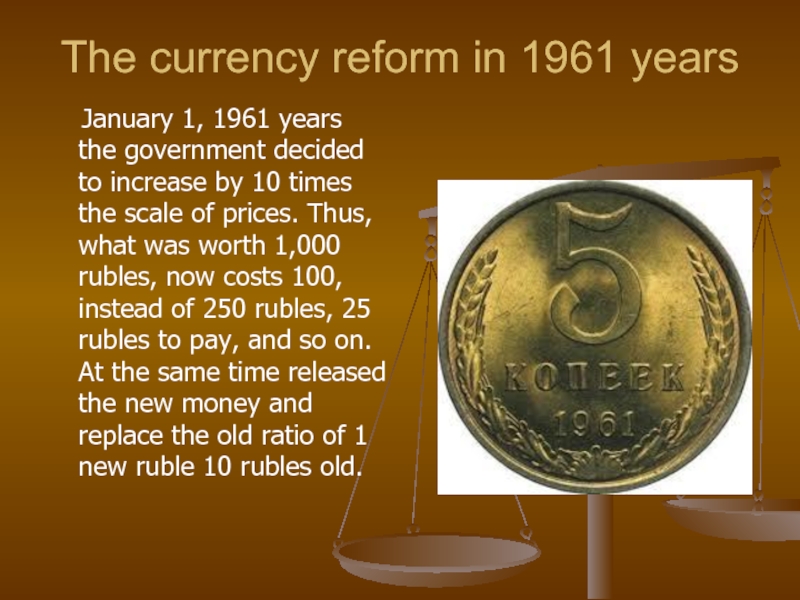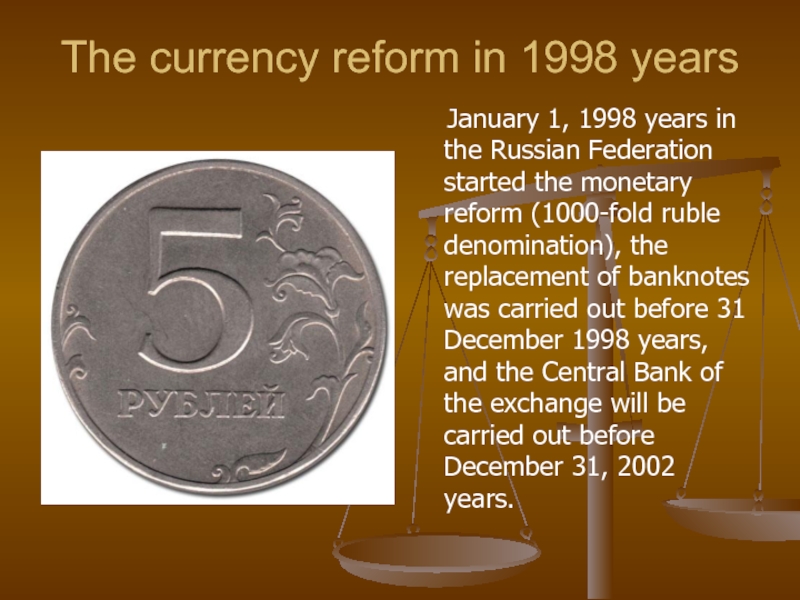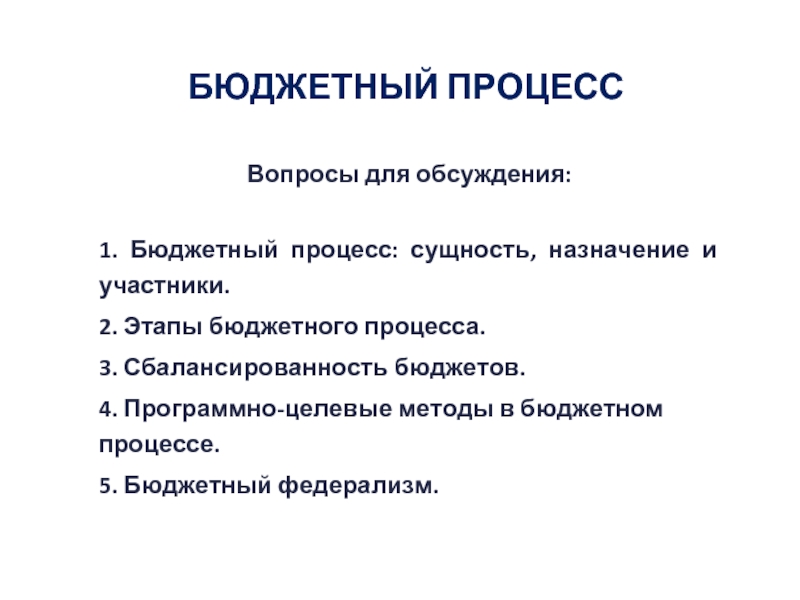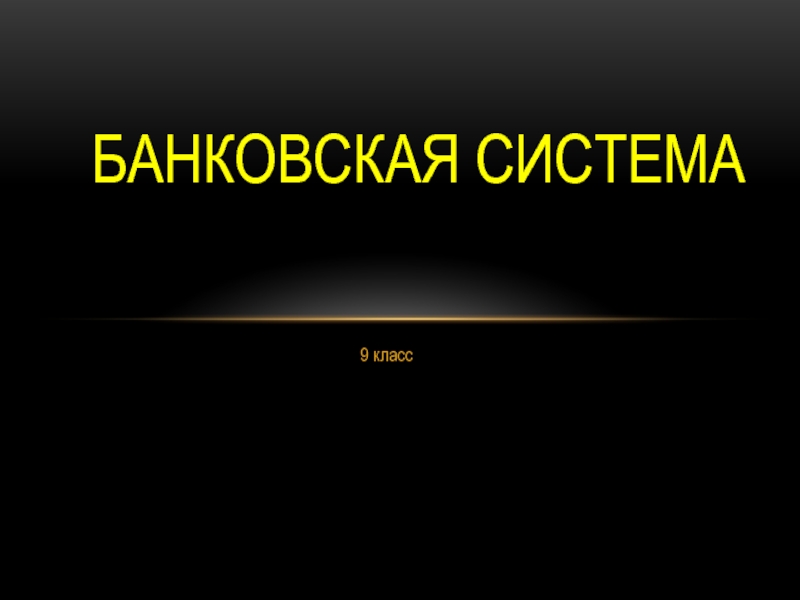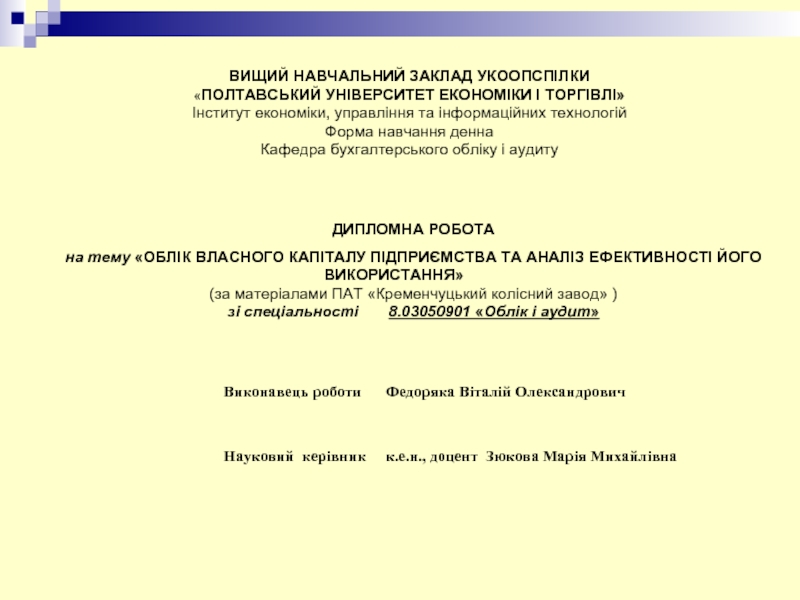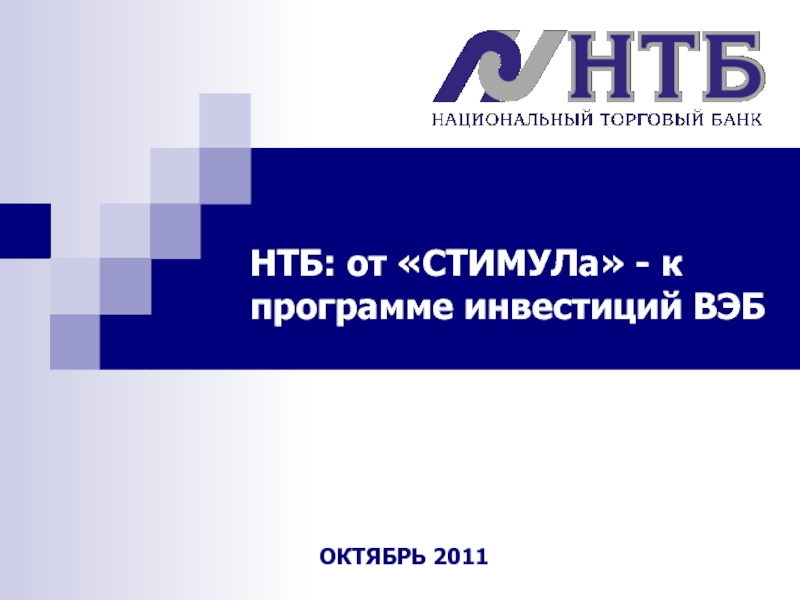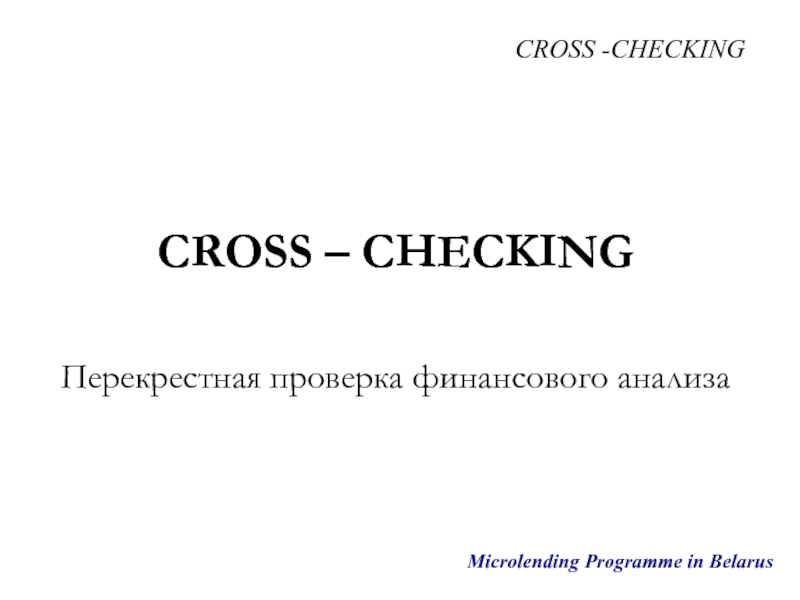Russia
- Главная
- Разное
- Дизайн
- Бизнес и предпринимательство
- Аналитика
- Образование
- Развлечения
- Красота и здоровье
- Финансы
- Государство
- Путешествия
- Спорт
- Недвижимость
- Армия
- Графика
- Культурология
- Еда и кулинария
- Лингвистика
- Английский язык
- Астрономия
- Алгебра
- Биология
- География
- Детские презентации
- Информатика
- История
- Литература
- Маркетинг
- Математика
- Медицина
- Менеджмент
- Музыка
- МХК
- Немецкий язык
- ОБЖ
- Обществознание
- Окружающий мир
- Педагогика
- Русский язык
- Технология
- Физика
- Философия
- Химия
- Шаблоны, картинки для презентаций
- Экология
- Экономика
- Юриспруденция
The monetary system of Russia презентация
Содержание
- 1. The monetary system of Russia
- 2. Сowrie shells From ancient times
- 3. Oriental dirhams
- 4. The first Russian coins. X
- 5. Сoinless period Following fragmentation in
- 6. Coins fragmentation period.
- 7. Coins of the Russian state.
- 8. Coins of imperial Russia. In
- 9. The advent of paper money
- 10. Getting monetary system of the USSR
- 11. Strengthening the financial system In
- 12. The currency reform in 1961 years
- 13. The currency reform in 1998 years
Слайд 2Сowrie shells
From ancient times to buy and sell goods
Slavs used a variety of subjects. One of the most common forms of money in ancient Russia were cowrie shells.
Слайд 3Oriental dirhams
In the VIII - IX centuries.
in Russia there dirhams - large silver coins with Arabic inscriptions. Dirham minted in the Arab Caliphate, and then Arab traders brought them to the territory of Kievan Rus.
X in the end. Arab Caliphate reduced chasing silver dirhams and the influx of them in Kievan Rus weakened, and in the XI century. stops completely.
X in the end. Arab Caliphate reduced chasing silver dirhams and the influx of them in Kievan Rus weakened, and in the XI century. stops completely.
Слайд 4The first Russian coins.
X in the end. in Kievan
Rus started minting its own coins of gold and Srebrenik - the first Russian coin Srebrenik - the first Russian coin silver. The first Russian coins and gold and silver coins were called. The coins depicted Grand Prince of Kiev and the peculiar state emblem in the form of a trident - the so-called sign of Rurik.
Слайд 5Сoinless period
Following fragmentation in the XII century in Russia
was attacked by Mongol-Tatars. The treasures of the ages are different forms of precious metals bullion. As once, money became the silver pieces. Only now, they have a definite shape and weight. This time period is called coinless.
Слайд 6Coins fragmentation period.
First Russian ruble - an
elongated bar of silver weighing approximately 200 grams, roughly chopped off at the ends. He appeared to light in the XIII century. While the ruble stood at HRK 10 grivnas. Hence the Russian decimal monetary system, which still exists today: 1 ruble = 10 dimes; 1 dime = 10 kopecks.
Слайд 7Coins of the Russian state.
When Ivan III, Russia has
become a single state. Now each prince could not independently to mint their own coins. At the head of the state stood the monarch, but he had that right.With the money of small weight, made of silver, he depicted a horseman with a sword. These coins were called Mechev. On the money of a large weight, too silver, depicts a horseman with a spear in his hand. They were called spear dengue. This was our first penny.
Слайд 8Coins of imperial Russia.
In March 1704 years by decree
of Peter I for the first time in Russian ruble started to make silver coins. Simultaneously released fifty dollars, polupoltinnik, dime equal to 10 kopecks, the snout with the inscription "10 money" and hit the jackpot.
Слайд 9The advent of paper money
When Elizabeth General Director Minich
suggested a plan to improve the financial situation of the state. The plan was that instead of expensive metal to release the pattern in Europe cheap paper money. Minich project went to the Senate and was rejected there. However, Catherine II, this project is carried out: instead of bulky copper coins in 1769 issued paper money in denominations of 25, 50, 75 and 100 rubles
Слайд 10Getting monetary system of the USSR
In August 1914
began World war. Financial Tsarist Russia immediately deteriorated sharply. Huge costs have forced the government to resort to increased production of paper money. There was inflation. As always in such cases, the population began to hide the first gold and then silver money. In 1915 he disappeared even a copper coin. The appeal remained only paper money. In the same year he was struck last royal ruble. Reinforced issue of paper money really upset the country's economy. The purchasing power of the ruble slid down prices rose enormously. In factories, printing money, were 13 thousand people. From 1917 years to 1923 years the amount of paper money in the country increased by 200 thousand times.
Слайд 11Strengthening the financial system
In 1922 years the Soviet government
issued a special bank notes - "gold coins". They are not calculated in rubles, and in the other monetary unit - of ducats. One ducat was equivalent to ten pre-revolutionary gold rubles. It was a solid, stable currency, backed by gold and other public values. Chervonets confidently and quickly do their job - strengthening the monetary system.
Слайд 12The currency reform in 1961 years
January 1, 1961 years
the government decided to increase by 10 times the scale of prices. Thus, what was worth 1,000 rubles, now costs 100, instead of 250 rubles, 25 rubles to pay, and so on. At the same time released the new money and replace the old ratio of 1 new ruble 10 rubles old.
Слайд 13The currency reform in 1998 years
January 1, 1998 years
in the Russian Federation started the monetary reform (1000-fold ruble denomination), the replacement of banknotes was carried out before 31 December 1998 years, and the Central Bank of the exchange will be carried out before December 31, 2002 years.
